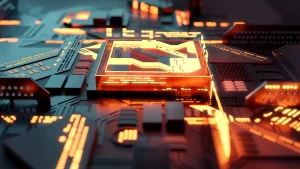The evolution of computer hardware is a fascinating journey, weaving through decades of innovation and breakthroughs that have fundamentally reshaped our world.
From the cumbersome and room-sized mainframes of the mid-20th century to the sleek and powerful devices that fit in our pockets today, the progression of computer hardware tells a story of human ingenuity and the relentless pursuit of advancement.
This evolution has not only transformed the way we interact with technology but has also been a key driver in the exponential growth of computing power, enabling new possibilities across all facets of society.
As we delve into the history, current state, and prospects of computer hardware, we uncover a narrative of constant change and adaptation.
The landscape of computing technology has been marked by a series of pivotal shifts, from the replacement of vacuum tubes with transistors to the introduction of microprocessors and beyond.
Each step forward has opened new horizons for innovation, pushing the boundaries of what computers can do and how they impact our lives.
The ongoing evolution of hardware is a testament to the human quest for knowledge and efficiency, showcasing our desire to build tools that enhance our capabilities and broaden our understanding of the world around us.
The Past
The dawn of computing was heralded by machines that were as enigmatic as they were enormous, relying on vacuum tubes and later transistors to perform calculations.
These early computers were marvels of their time, enabling significant advancements in fields ranging from military operations to space exploration.
However, they were also incredibly bulky, expensive, and limited in their capabilities, accessible only to institutions with substantial resources.
The transition to transistors and the subsequent development of the microprocessor marked a turning point, shrinking the size of computers and vastly increasing their power and efficiency.
This era witnessed the birth of the personal computer, making technology accessible to the masses and igniting a revolution that would forever change the landscape of personal and professional computing.
As computer hardware continued to evolve, the late 20th century saw rapid advancements in processing power, storage capacity, and connectivity.
The introduction of the Integrated Circuit (IC) and later the microprocessor miniaturized and accelerated computing, paving the way for the digital age.
Personal computers became household items, and the internet began to weave its web, connecting the world in ways previously unimaginable.
These developments were underpinned by relentless improvements in hardware, with engineers and scientists pushing the limits of silicon-based technology to meet the growing demands for faster, more efficient, and more reliable computing solutions.
The Present
Today, the landscape of computer hardware is defined by astonishing feats of engineering that have made devices more powerful, efficient, and versatile than ever before.
Modern processors, with billions of transistors packed into spaces smaller than a fingernail, power everything from smartphones to supercomputers.
Memory and storage technologies have also seen exponential growth, with solid-state drives (SSDs) and cloud storage transforming the way we save and access data.
These advancements have facilitated the rise of high-definition gaming, real-time data analytics, and complex simulations, pushing the boundaries of what software can achieve and enabling a new era of computing that is more integrated into our daily lives.
The current state of computer hardware is also a reflection of our changing relationship with technology. As devices become smaller, more energy-efficient, and more interconnected, the line between physical and digital realms continues to blur.
Wearable devices monitor our health and augment our reality, while the Internet of Things (IoT) connects billions of devices, turning our homes, cities, and industries into smart ecosystems.
These developments are powered by cutting-edge hardware that balances power consumption with performance, highlighting the industry’s focus on sustainability and user-centric design.
As we move forward, the synergy between hardware innovation and software applications will continue to drive the transformation of our digital landscape, opening new avenues for technological advancement and societal change.
The Future
Looking ahead, the future of computer hardware beckons with promises of quantum leaps in computing power and entirely new paradigms of processing.
Quantum computing, with its potential to perform complex calculations at speeds unimaginable with today’s technology, stands on the horizon as a revolutionary breakthrough.
Similarly, neuromorphic computing, which seeks to mimic the human brain’s efficiency and processing ability, could redefine our approach to artificial intelligence and machine learning.
These and other emerging technologies, such as 3D integrated circuits and optical computing, represent the next frontier in hardware development, offering glimpses of a future where computing limitations are dramatically reduced, and new possibilities are endless.
However, these advancements come with their own set of challenges and implications. The race towards ever-smaller transistors is approaching physical limits, prompting the industry to explore alternative materials and architectures.
Moreover, the increasing complexity and energy demands of cutting-edge hardware raise important questions about sustainability and environmental impact.
As we navigate these challenges, the future of computer hardware will likely be characterised by a blend of incremental improvements and groundbreaking innovations.
The journey ahead promises to be as exciting as it is uncertain, with each new developmental leap forward, promising to unlock new dimensions of computing.
The continued evolution of computer hardware remains a cornerstone of technological progress, holding the key to future innovations that could reshape our world in ways we can only begin to imagine.
Conclusion
The journey through the evolution of computer hardware is a testament to human creativity and perseverance.
From the early days of bulky, inefficient machines to the sleek, powerful devices that have become an integral part of our daily lives, each step in this evolution has been driven by a desire to overcome limitations and explore new possibilities.
As we reflect on this journey, it’s clear that the progression of computer hardware has not only transformed technology but has also played a pivotal role in shaping modern society.
The advancements we’ve witnessed have enabled leaps in productivity, connectivity, and knowledge, fundamentally altering how we live, work, and communicate.
Looking towards the future, the evolution of computer hardware promises to continue at an unprecedented pace, propelled by both incremental improvements and groundbreaking innovations.
As we stand on the brink of new technological frontiers, it’s more important than ever to remain informed and engaged with the latest developments in hardware technology.
By doing so, we can better understand the potential impacts and opportunities these advancements present, ensuring that we harness the power of technology to build a better, more efficient, and more connected world.
The story of computer hardware is far from over, and the chapters yet to be written are sure to be filled with exciting breakthroughs that will continue to drive human progress forward.



